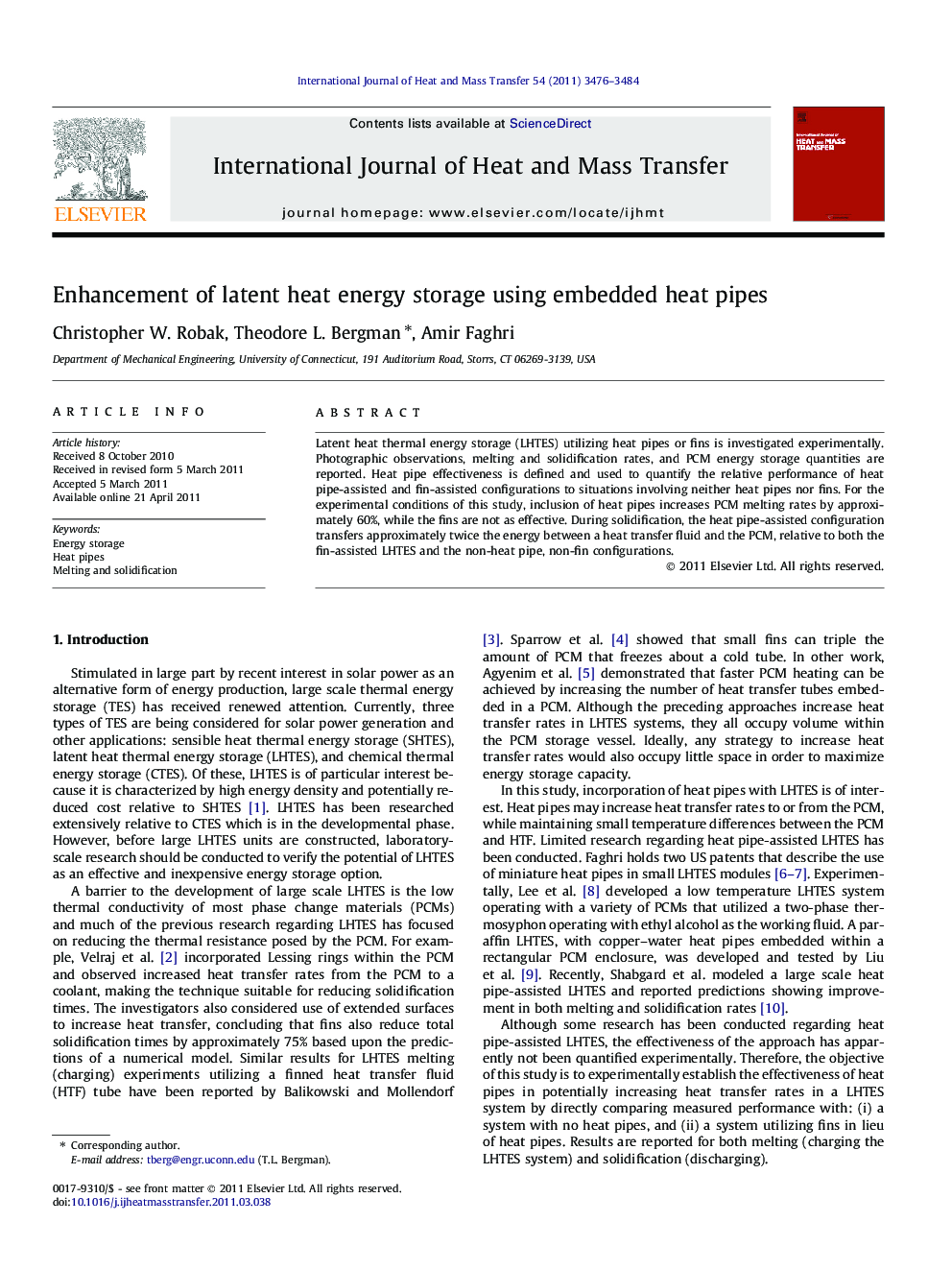| Article ID | Journal | Published Year | Pages | File Type |
|---|---|---|---|---|
| 659981 | International Journal of Heat and Mass Transfer | 2011 | 9 Pages |
Abstract
Latent heat thermal energy storage (LHTES) utilizing heat pipes or fins is investigated experimentally. Photographic observations, melting and solidification rates, and PCM energy storage quantities are reported. Heat pipe effectiveness is defined and used to quantify the relative performance of heat pipe-assisted and fin-assisted configurations to situations involving neither heat pipes nor fins. For the experimental conditions of this study, inclusion of heat pipes increases PCM melting rates by approximately 60%, while the fins are not as effective. During solidification, the heat pipe-assisted configuration transfers approximately twice the energy between a heat transfer fluid and the PCM, relative to both the fin-assisted LHTES and the non-heat pipe, non-fin configurations.
Related Topics
Physical Sciences and Engineering
Chemical Engineering
Fluid Flow and Transfer Processes
Authors
Christopher W. Robak, Theodore L. Bergman, Amir Faghri,
